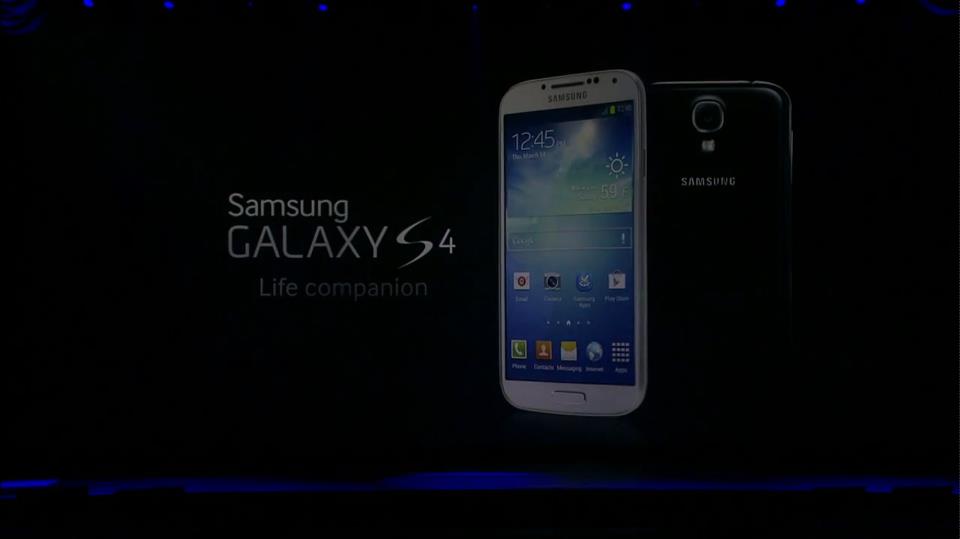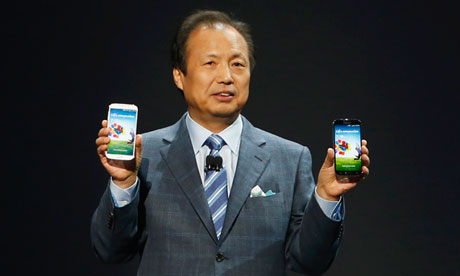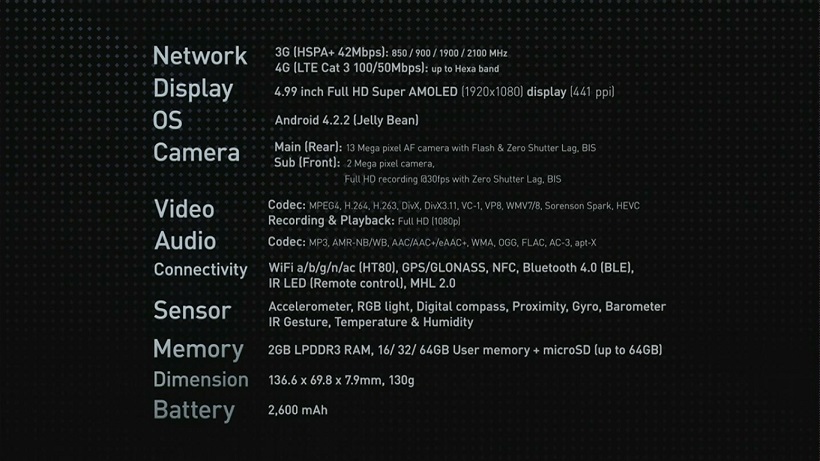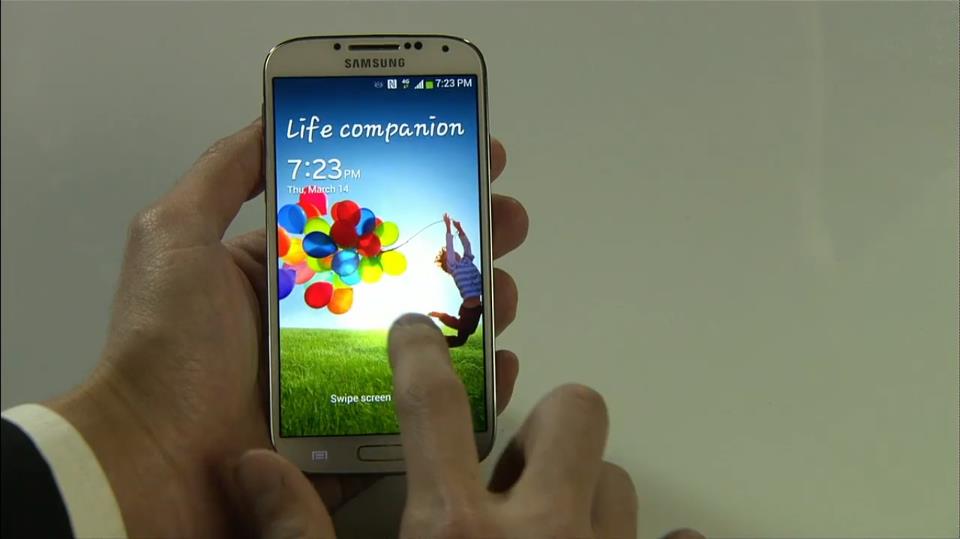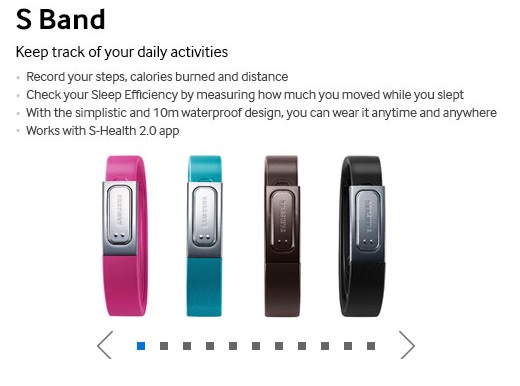Samsung announced, under the bright Broadway lights in New York City, its latest flagship smartphone last Friday. Never mind that the launch event, which was vastly different to the standard launch event from other companies, had managed to offend and confuse in equal measure; the Galaxy S4 is here, and Samsung wants the whole world to know about the successor to one of the top selling devices of 2012.
http://www.youtube.com/watch?v=Yaw6CSaPnfk
In fact, judging by the mega blockbuster launch, the Galaxy S4 is more than just a successor, and showed off the good, the bad, and the undeniably brilliant aspects of Samsung’s best smartphone to date.
The Good
There is no denying that the Galaxy S4, like all other flagship smartphones, is packed with the latest and greatest in hardware. The Galaxy S4 is no different – not only is it one of few 5-inch, Full HD smartphones in the market, the Galaxy S4 blows the competition out of the water with an eight-core processor. Sure, it is essentially two quad-core processors that do not run simultaneously, but it nevertheless gives Samsung quite an edge in the increasingly unnecessary specs race among Android devices. Further adding gloss to the Galaxy S4’s hardware is the inclusion of a 13MP camera, as well as a massive 2600mAh battery, while still retaining pretty much the same chassis from the smaller and significantly less powerfully-specced Galaxy S III.
And yet, it was particularly refreshing to note that this impressive spec sheet was barely noted during the event, and was eventually published on the large screen at the back of the stage – like they didn’t matter. Samsung, to their credit, actually took the hint: when it comes to Android phones, the speed at which devices are being churned out with more and more powerful hardware was reaching the point of absurdity, with consumers eventually ending up with the short straw as OEMs try to outdo one another. ZDNet’s Jason Perlow notes that this has been an issue on Android devices as early as 2012, when quad-core processors first made their appearance on smartphones. Nevertheless, it is rare for a phone launch to barely mention the hardware that powers it, and the Korean giants should be commended for going against the norm (well, the entire event was different, but that’s another matter.)
With the Galaxy S4, Samsung also appears to have taken the best bits of its previous products and melded them into one very impressive device. The unmistakable design elements from the Galaxy S III, coupled with the interesting gestures like Air View which was previously only reserved for the Galaxy Note and its S Pen, and finally some of the camera app UI from the Galaxy Camera are seamlessly integrated into the Galaxy S4, which is quite a feat. The fact that these bits fit so well together is another feather in Samsung’s cap.
The Bad
However, another notable absence from the launch was a live demo of the phone itself. Samsung were supposed to promote its new phone, and not a Broadway show. To the many tech journalists who covered the event, the lack of a live demo to actually show off the Galaxy S4’s features – as opposed to the on-stage actors and their Galaxy S4-related skits – was pretty close to criminal. While Samsung should be lauded for attempting a wholly different way to launch a smartphone, certain elements – such as a live demo – should not be underestimated in its ability to help form a strong first impression for the device.
http://www.youtube.com/watch?v=2LHv1FPd1Ec
On a related note, one cannot help but notice the plethora of Samsung apps pre-installed into the Galaxy S4. There is S Translator, S Voice, S Voice Drive, Samsung Hub, Samsung Messenger, S Health, Group Play, Air View, Air Gesture, Smart Pause, Smart Scroll, ChatOn and WatchOn. Keen Android users will note that there already are existing Google apps built into Android that have similar functions as some of the Samsung apps, such as S Translator, S Voice and even the Samsung Hub. For the end user, it easily translates into less storage space and, crucially, unnecessary hogging of processing power. In addition, the earlier-mentioned lack of a live demo also gives rise to the suggestion that the deluge of software enhancements that are found on the Galaxy S4 do not yet work as Samsung claims them to.
These software enhancements have also already drawn its share of criticism. The Verge’s David Pierce, in his hands-on with the device, noted that Smart Scroll and Smart Pause were “skew more toward gimmick“, while Taylor Martin from Pocketnow went one step further and questioned if these features will ever be used in day-to-day use. The Galaxy S4’s features, for ZDNet’s Perlow, does not excite and for him it is “just another Android device“. Also, these software features are the result of a lack of innovation, HTC argued.
It wasn’t just the seemingly excessive software enhancements that drew some flak. The polarizing design from the Galaxy S III makes a comeback in the Galaxy S4, and even among the critics, it is very much a love or hate affair. The rounded curves does make the phone comfortable to hold over long periods, while the chassis has not changed much in dimensions either despite the bump in screen size. However, where Nokia has achieved great success on its use of polycarbonate, Samsung is again facing criticism over the build quality of the Galaxy S4’s polycarbonate body. Engadget’s Joseph Volpe was particularly stinging in his preview of the phone, labelling the new cross-stitching design “a decidedly inferior imitation that does little to elevate the GS 4’s build quality…it actually seems to have a cheapening effect.”
Wired’s Roberto Baldwin and Nathan Olivares-Giles hit the nail on the head by calling the Galaxy S4 an “evolution, not a revolution“. Samsung, it appears, have played it safe with the Galaxy S4.
The Brilliant
Don’t let that fool you though. The Galaxy S III, the iPhone 4s and 5 didn’t light up the world initially either. But all three proved to be hugely successful devices simply because they offered a complete package that worked. With the Galaxy S4, Samsung has manufactured a device that may eclipse all previous smartphones before it in terms of popularity and reach.
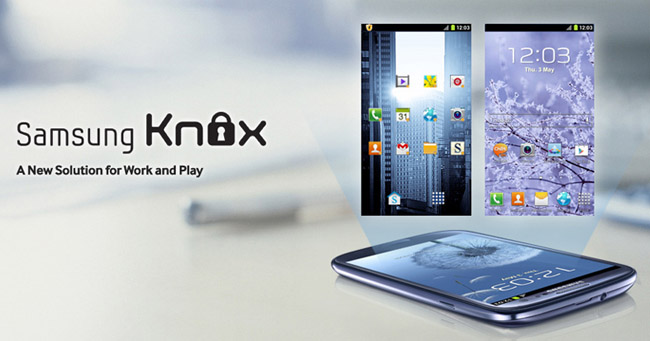 (Image credit: intomobile.com)
(Image credit: intomobile.com)
For starters, the Galaxy S4 ships with the new Samsung KNOX feature, which separates sensitive work information in a separate, secure partition in the device. It works similarly to BlackBerry Balance on the BlackBerry 10 platform, and offers on-the-fly switching between work and personal use. It is actually part of Samsung’s SAFE (Samsung Approved For Enterprise) feature, which the company showed off back in January. Having a secure and encrypted section of the device for professional use is a powerful solution to the increasing BYOD (Bring Your Own Device) trend among today’s employees. It means that employees don’t have to carry two phones around, and employers save on issuing a second device to employees, while also allowing them to remotely wipe sensitive data should the device be stolen or compromised in any way.
In addition, the Galaxy S4 also has three new sensors, two of which are not found in any other smartphone: a pedometer, as well as temperature and humidity sensors. These form the basis of the hardware upon which the S Health app draws information about the user. In a society that is increasingly conscious about their health and fitness, Samsung may have pulled off a masterstroke with S Health and its accessories. Runners now only need to get the S Band wristband to help track their runs (the built-in pedometer also does the job, but users will have to hold the phone while running, which isn’t ideal). The temperature and humidity sensors indicate the hygiene levels of the surrounding environment, while there’s also features such as a calorie calculator, sleep efficiency indicator, and the Body Scale and Heart Rate Monitor accessories allow for greater information to be fed into the S Health app, offering a comprehensive solution to the health-conscious consumer.
Finally, it must also be noted that throughout the launch event, not a single time was “Google” or “Android” uttered. Considering Google’s increasing anxiety at the manner in which Samsung’s marketing muscle has pushed it as the top Android OEM to the point where the Android brand is almost synonymous with Samsung, this was hardly a surprise. Another worrying indication of Samsung’s next move can clearly be seen from some of its apps. As noted earlier, apps such as S Translate and S Voice work essentially the same way as some Google apps (Google Translate and Googe Search/Google Now); the Samsung Hub is also similar to the Play Store. In addition, the TouchWiz UI overlay has pretty much remained the same on almost every Samsung Android device. Interestingly, the new Samsung REX line of budget phones and the Bada OS share similar user interface elements with TouchWiz. What could that possibly mean?
For starters, it could mean an increasing emphasis by Samsung on the Galaxy brand instead of Android. Back in November the Korean company hired freelance brand consultant Scott Bedbury to increase the brand’s international appeal. Initially it was thought that might involve a simple logo change, but now it looks like the company is aggressively promoting the Galaxy brand, which appears in every campaign the company is a part of (the recent Golden Disk Awards being a prime example).
Also, the overlapping Samsung apps could indicate that the company may be working on forking the already-fragmented Android operating system, and creating a “Samsung Phone“. It sounds rather far-fetched, and would mean Samsung leaving the Open Handset Alliance, but it is not inconceivable. Google already views Samsung’s dominance as a threat, and purchased Motorola as a hedge in case relations between the two companies turn sour. Meanwhile, Samsung continues to develop Tizen, an open-sourced alternative operating system that, if proven to be successful, could result in direct competition to Android.
The Samsung Galaxy S4 may not set the pulse racing with standout industrial design or a revolutionary way of interacting with the device. Instead, the company has refined elements from its other devices and merges the best features into the Galaxy S4, and further adds some new tricks in the process. The potent mix of added features in the Galaxy S4 that attract different subsets of consumers, in addition to the home-brewed apps that hint at new directions for the company, not only assures the undeniable success of the Galaxy S4, but also generate some excitement over the future of a mobile industry that is badly in need of some change.
Follow us on Instagram, Facebook, Twitter or Telegram for more updates and breaking news.


